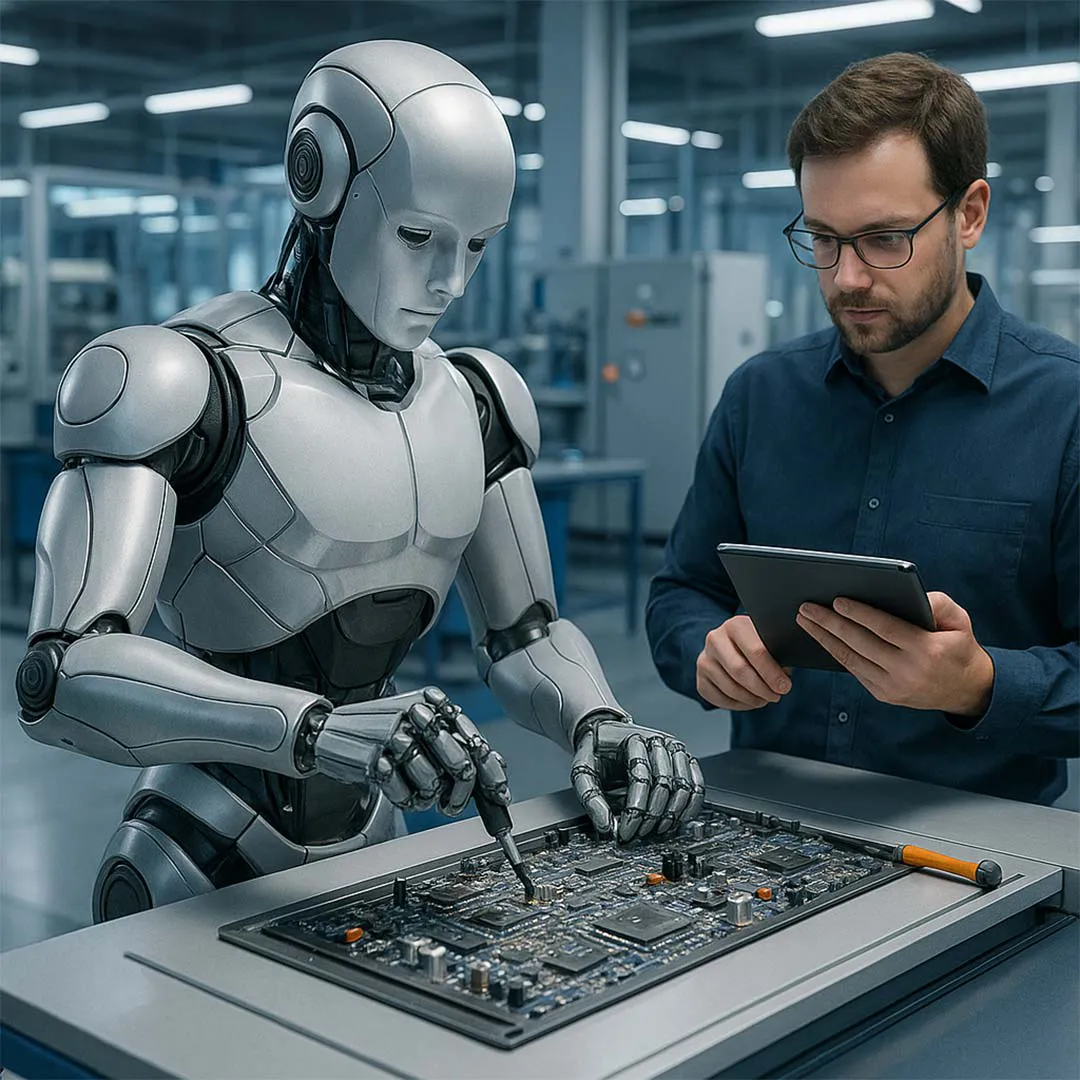
Orion Meta Glasses: Meta's vision of a mixed reality future
26. September 2024
Meta, formerly known as Facebook, presented the Orion Meta Glasses at the Meta Connect conference in 2024. This marked a significant breakthrough in augmented reality (AR). The glasses represent an important step in AR technology toward seamlessly integrating digital interactions.
The goal is to merge the physical world with digital elements. The Orion glasses aim to revolutionize the way we interact with everyday devices like smartphones. In addition, they provide a hands-free, immersive experience powered by Meta’s advanced artificial intelligence (AI).
The future of augmented reality: Why Orion?
At first glance, the Orion Meta Glasses resemble conventional eyewear. However, behind the stylish design lies cutting-edge AR technology. It merges real images with digital enhancements. With a 70-degree field of view and holographic display options, Orion stands out from other AR products. The lens is built on a silicon carbide architecture and projects lifelike digital images into the environment. This allows users to interact with virtual objects in the real world. It opens up new possibilities for multitasking, gaming, communication, and AI-powered shopping.
Meta AI at your side
The Orion glasses go far beyond simple AR. Meta has integrated powerful AI features directly into the device. With advanced eye and hand tracking, users can control their digital environment. The electromyography (EMG) wristband also enables control through natural gestures and muscle signals.
Want to start a video call while cooking? A simple finger gesture is all it takes. Need help identifying an object? Just ask Meta AI and get the information instantly. This AI integration blurs the line between the physical and virtual worlds. It offers intuitive experiences that seem like science fiction.
Hands-free interaction with the world
The potential to replace smartphones lies in the functionality of Orion glasses. It is possible to send messages and make calls without using a phone. Digital interfaces can also be customized. Thanks to integration with platforms such as WhatsApp and Messenger, Orion enables real-time video calls. These appear directly in the field of vision, offering seamless and unobtrusive communication. Meta has also designed the glasses to be as lightweight as possible. Weighing less than 100 grams, they can be worn for long periods of time, with further weight reduction expected before market launch.
Neural Interfaces: A Look into the Future
One outstanding feature of the Orion glasses is the neural interface wristband. It could revolutionize the way we interact with technology. The EMG wristband reads subtle muscle movements in the wrist, enabling fluid control of the AR environment. No voice commands or hand gestures are necessary. This interface also supports multitasking across different apps. It is considered a major innovation that could challenge traditional touchscreens and controllers.
Challenges and future prospects
Although the Orion glasses are generating excitement, they are still in the prototype stage. Many aspects still need to be optimized. The current display resolution shows slight color distortion. In addition, the relatively heavy frame could deter some users compared to conventional glasses. It may be uncomfortable to wear the glasses all day. Nevertheless, the 90Hz refresh rate and advanced gesture controls position Orion at the forefront of AR development. Meta plans to launch the product for consumers in the next few years, probably by 2027. The goal is to reduce costs and further improve the technology.
Comparison with Apple Vision Pro
A comparison between the Meta Orion Glasses and the Apple Vision Pro reveals clear differences in mixed reality. Apple’s Vision Pro is a mixed reality headset that combines AR and VR in an enclosed experience. It offers a smaller field of view and a closed display design. In contrast, the Orion glasses are designed as lightweight, transparent eyewear that integrates digital content into the real environment. They also provide a significantly wider 70-degree field of view. Meta places great emphasis on hands-free neural controls with the EMG wristband, a feature Apple Vision Pro does not offer.
Neural interface wristband for controlling Orion glasses
The EMG wristband is a central component of the Orion system and enables the AR experience to be controlled through muscle movements. Users do not have to rely exclusively on hand gestures or voice commands. By recognizing subtle movements in the wrist, they can navigate menus and visit virtual apps. Multitasking is also possible without having to touch a physical device. This technology offers intuitive, hands-free control and has the potential to become a key element of future AR technologies.
When can we expect the consumer version of Meta Orion Glasses?
Although the excitement around Orion is high, Meta states that the glasses are still in the prototype stage. Internal leaks suggest that the consumer version of the Orion glasses will likely be released around 2027. Until then, Meta will continue to optimize the design, improve the resolution, and reduce the weight. The hardware will also be adjusted to meet both performance and price standards.
Conclusion
The Orion Meta Glasses represent a bold step into the future of augmented reality. Although challenges such as display quality and weight remain, the potential of this device is enormous. Whether for gaming, multitasking, or communication, Orion promises smoother, more intuitive, and immersive interactions with technology. As Meta continues to refine its AR capabilities, the Orion glasses could become the centerpiece of our digital future.
Our blog
Latest news
With our blog, you are always close to our work, our current projects and the latest trends and developments in web and print.
Any questions?





